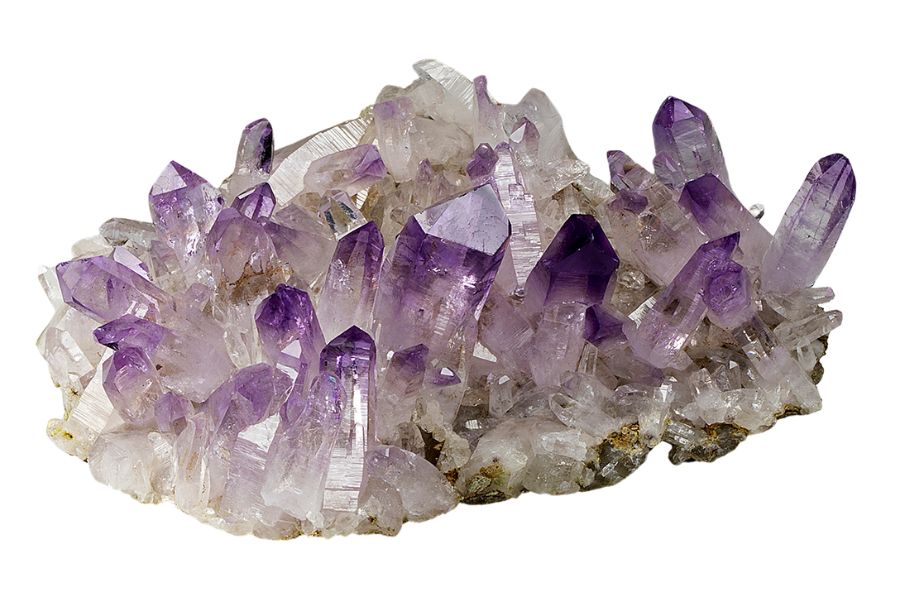Finding crystals can be a rewarding adventure, offering a unique way to explore the natural beauty and geology of the region. Whether you’re a seasoned rockhound or just getting started, knowing where to look is key to uncovering these hidden treasures.
In this state, a variety of locations provide opportunities to discover different types of crystals. From rocky outcrops in the mountains to stream beds that carry sparkling surprises, each area offers its own unique finds for those willing to search.
We can help you get started with some places you can explore for crystals below!
Crystals you can find in the US
The United States offers a wide range of crystals that reflect its diverse geology. From vibrant gems to more subtle mineral formations, there’s something to discover in nearly every region.
Calcite
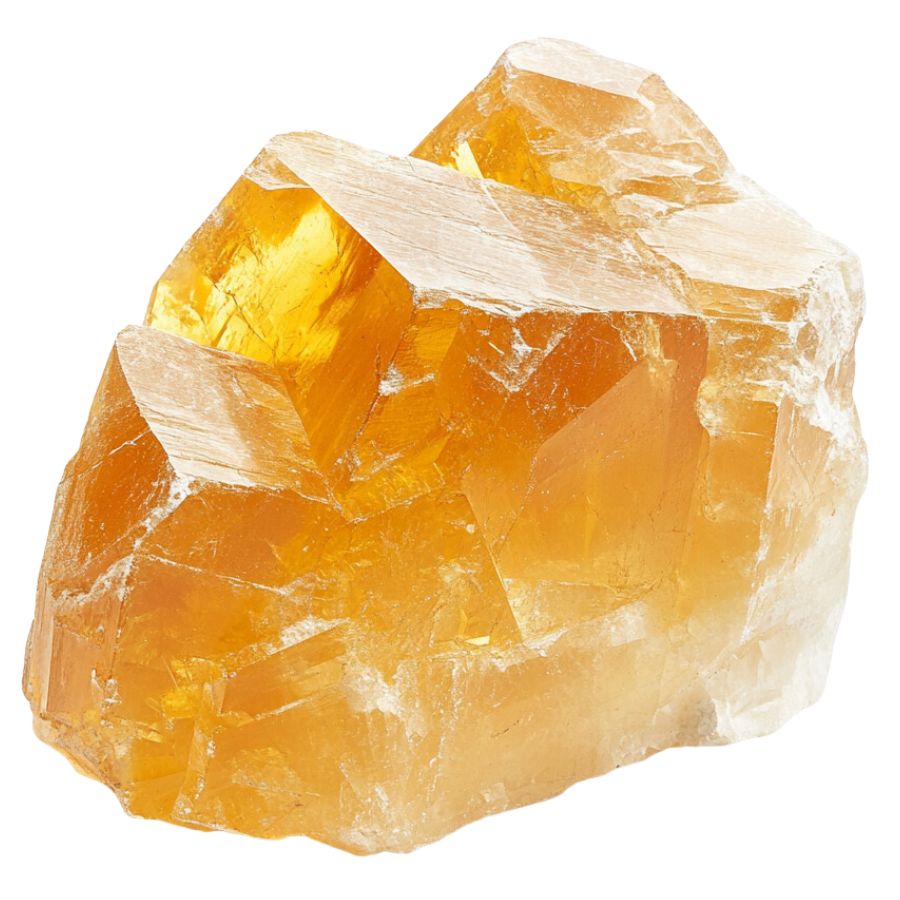
With a variety of forms and a unique property of double refraction, calcite allows objects viewed through the crystal to appear doubled. This mineral can appear in a spectrum of colors, with pure forms typically being transparent or white.
In addition, calcite reacts vigorously with acids, which aids in distinguishing it from other minerals. It also frequently contributes to the structure of sedimentary rocks such as limestone.
Gypsum
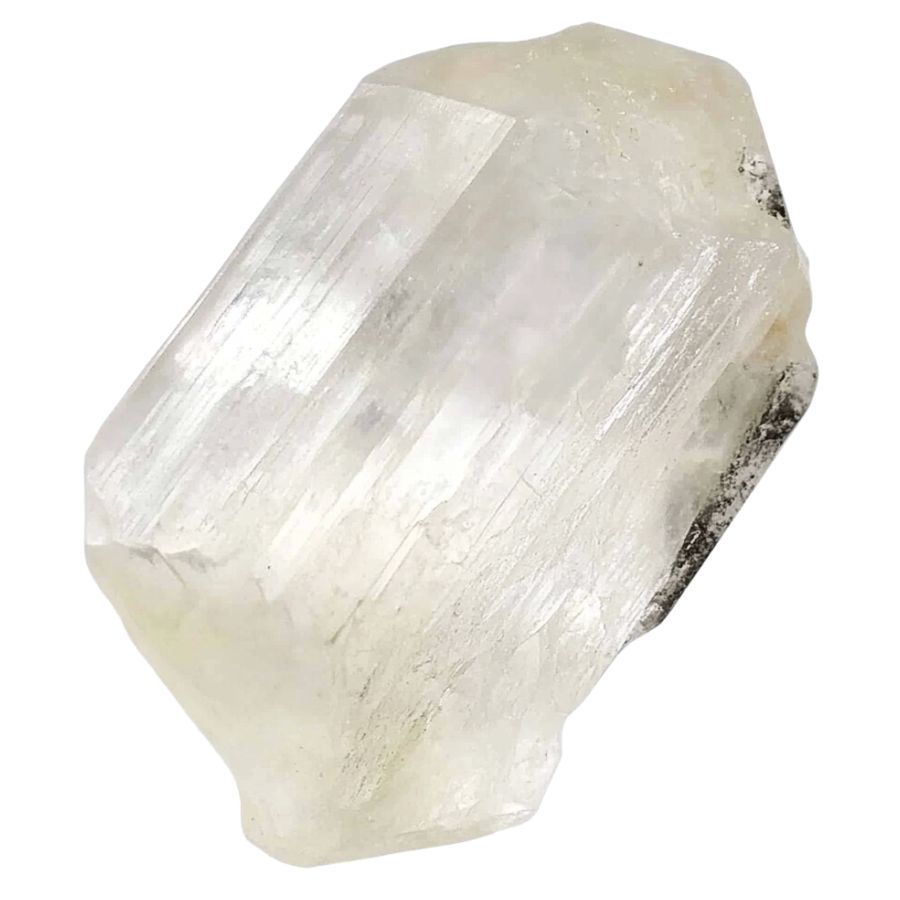
Gypsum’s notable softness allows it to be easily scratched with just a fingernail, often presenting as white or very light-colored in its pure form.
It manifests in both crystalline forms, like selenite, and massive forms such as alabaster, making it versatile in use and appearance.
Gypsum is also essential in the construction industry and is a key component in the manufacture of plaster and drywall.
Fluorite
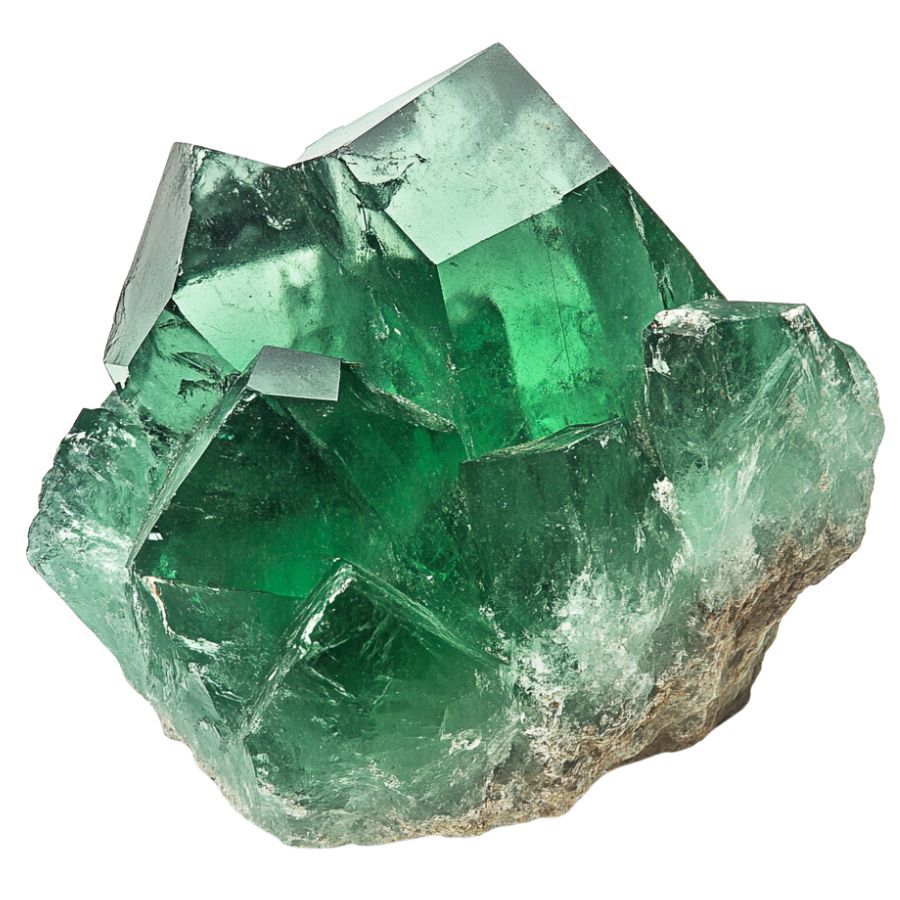
Fluorite comes in a wide range of vibrant colors, including purples, greens, blues, and yellows, and is known for forming in well-defined cubic crystals.
Beyond this, fluorite exhibits fluorescence under ultraviolet light! It can also be used in various industrial applications, including as a flux in steelmaking.
Galena
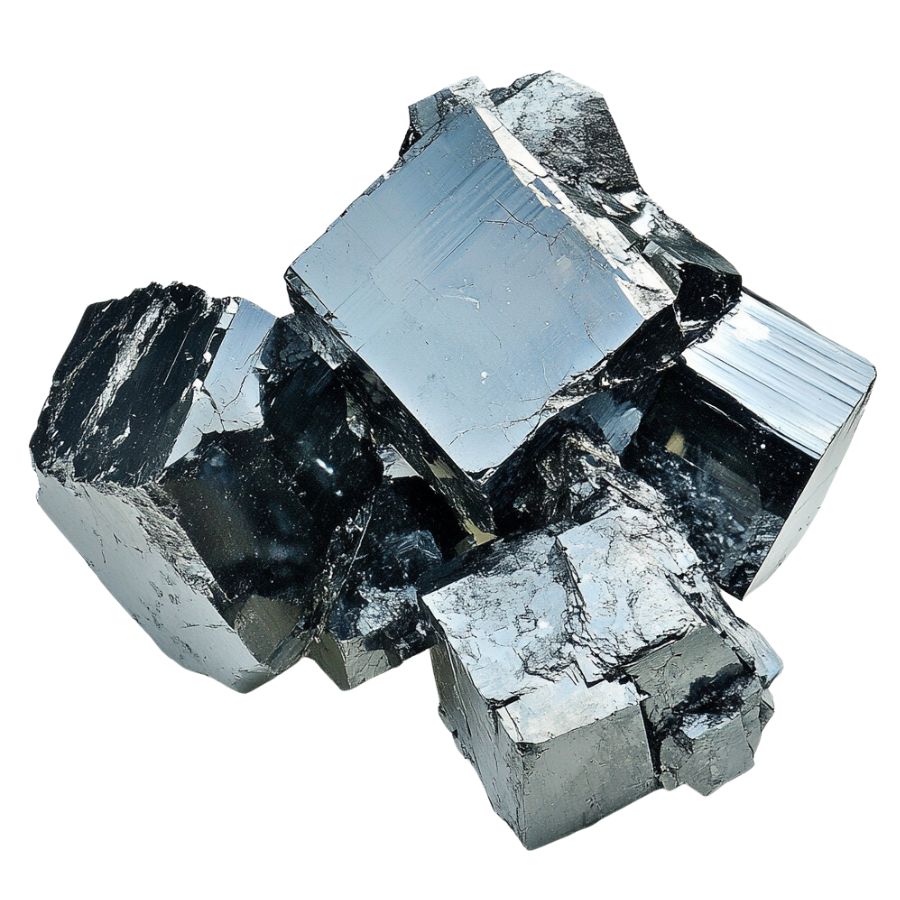
Galena distinguishes itself with a metallic luster and high density, typically found in a cube-like form. It serves as the primary ore of lead, making it important in the metal industry, while its shiny, silver color attracts collectors.
Not only does its appearance make it a subject of interest, but its weight and texture provide tangible lessons in mineral density and metallic properties. Galena also often contains traces of silver, adding to its commercial and educational value.
Corundum
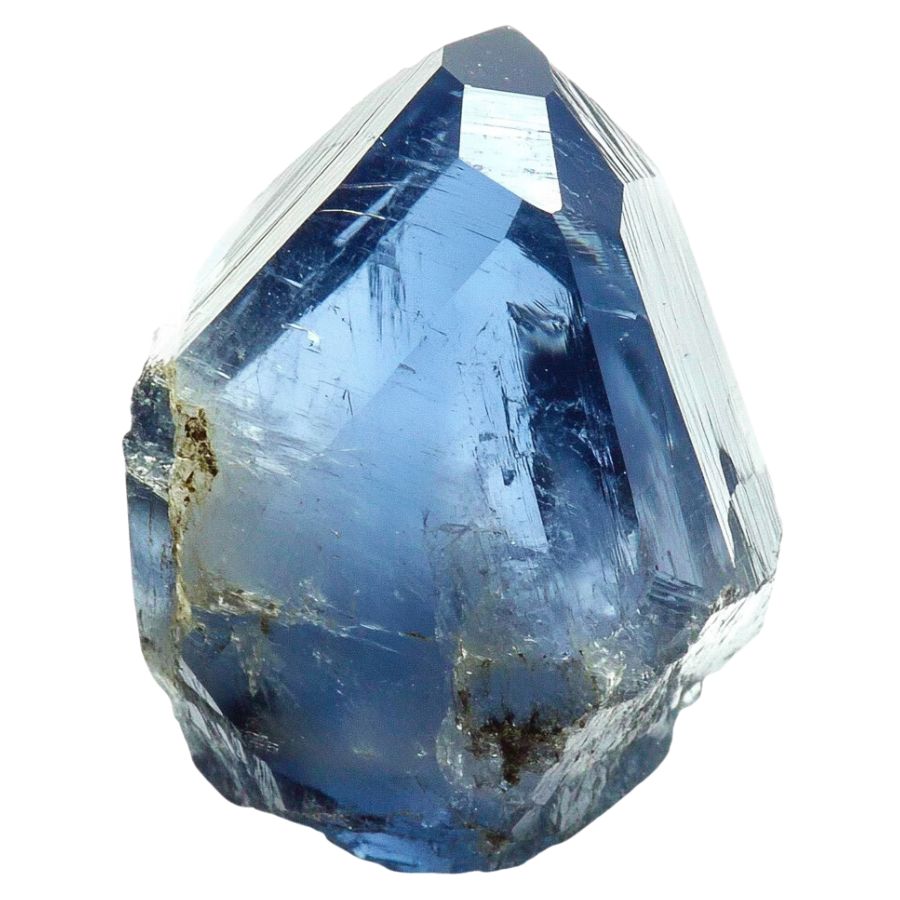
Corundum is a mineral that comes in a variety of colors, though it is typically transparent or gray. Its most famous forms are sapphires and rubies, which are prized for their vibrant blue and red hues.
The mineral is known for its remarkable hardness, ranking just below diamond on the Mohs scale. This durability makes corundum ideal for industrial abrasives and cutting tools, as well as a popular choice for fine jewelry.
Quartz
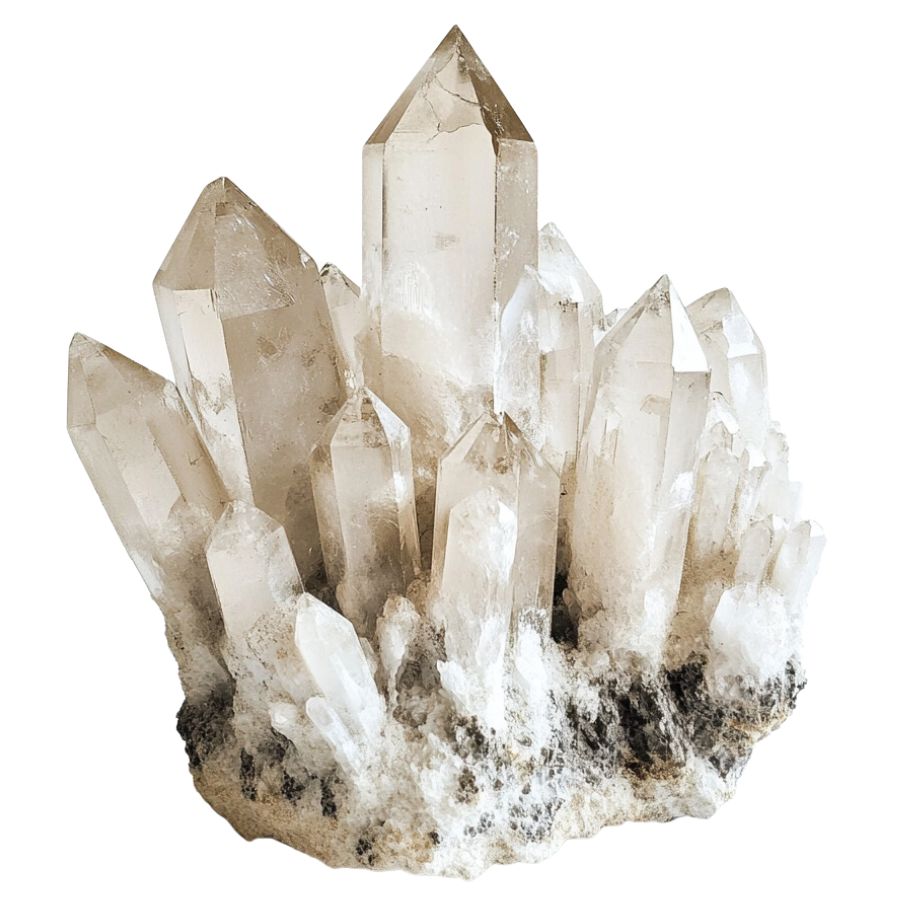
Quartz is among the most common minerals in the Earth’s crust and is prized for its durability and variety. It forms in a wide range of colors and types, from clear rock crystal to purple amethyst.
The mineral is notable for its hardness and durability, which contribute to its use in a variety of applications. Quartz is also popular in the manufacturing of electronics and watches due to its piezoelectric properties, which allow it to convert mechanical pressure into electrical energy.
Pyrite
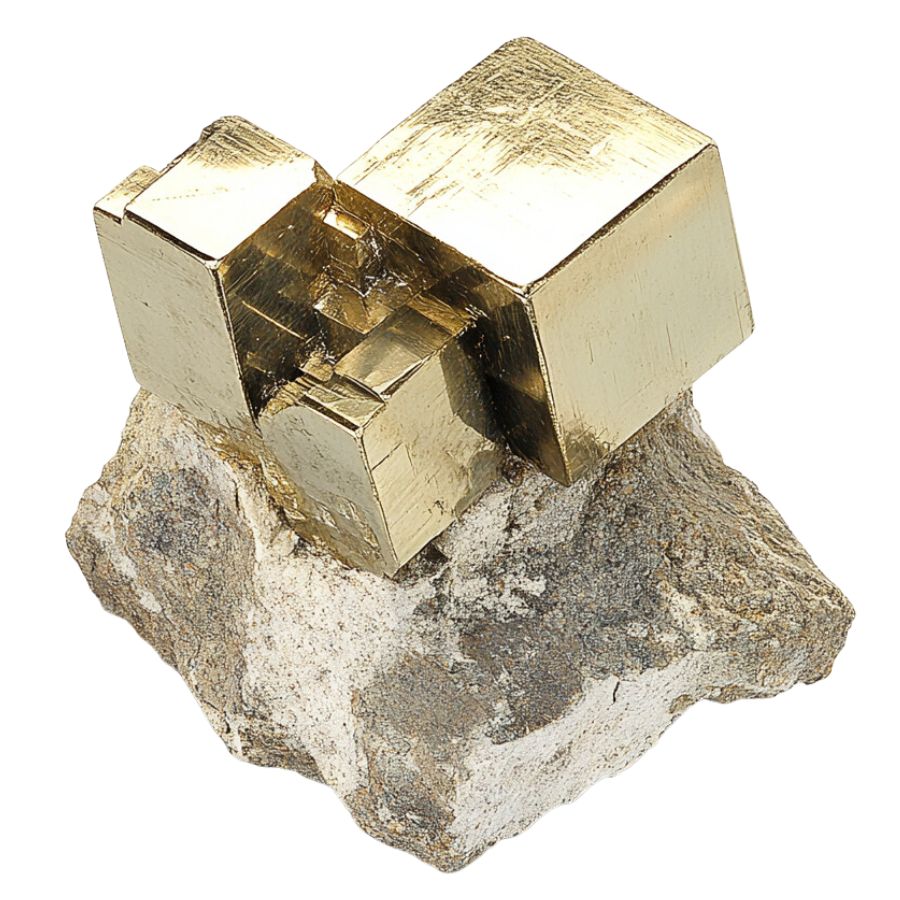
Often mistaken for gold due to its metallic luster and pale brass-yellow hue, pyrite is known colloquially as “fool’s gold.” Its characteristic cube-shaped crystal formations look man-made but are actually completely naturally formed!
Pyrite also has historical importance in producing sulfur dioxide for sulfuric acid production.
Rhodochrosite
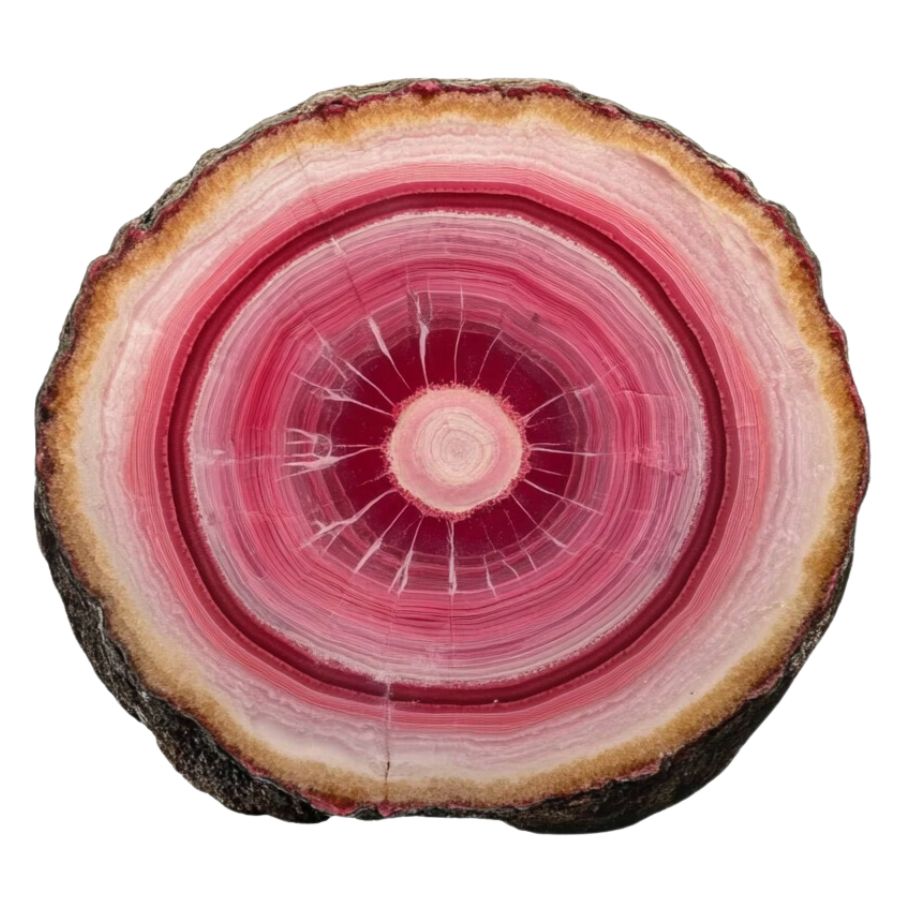
Rhodochrosite stands out with its rich pink and red hues, making it highly desirable as both a mineral specimen and a gemstone.
It typically forms in layered or stalactitic structures, with bands of colors that showcase how it grew over millions of years.
Beyond its beauty, rhodochrosite is significant as the main source of manganese, an essential element used in metal alloys.
Rhodonite
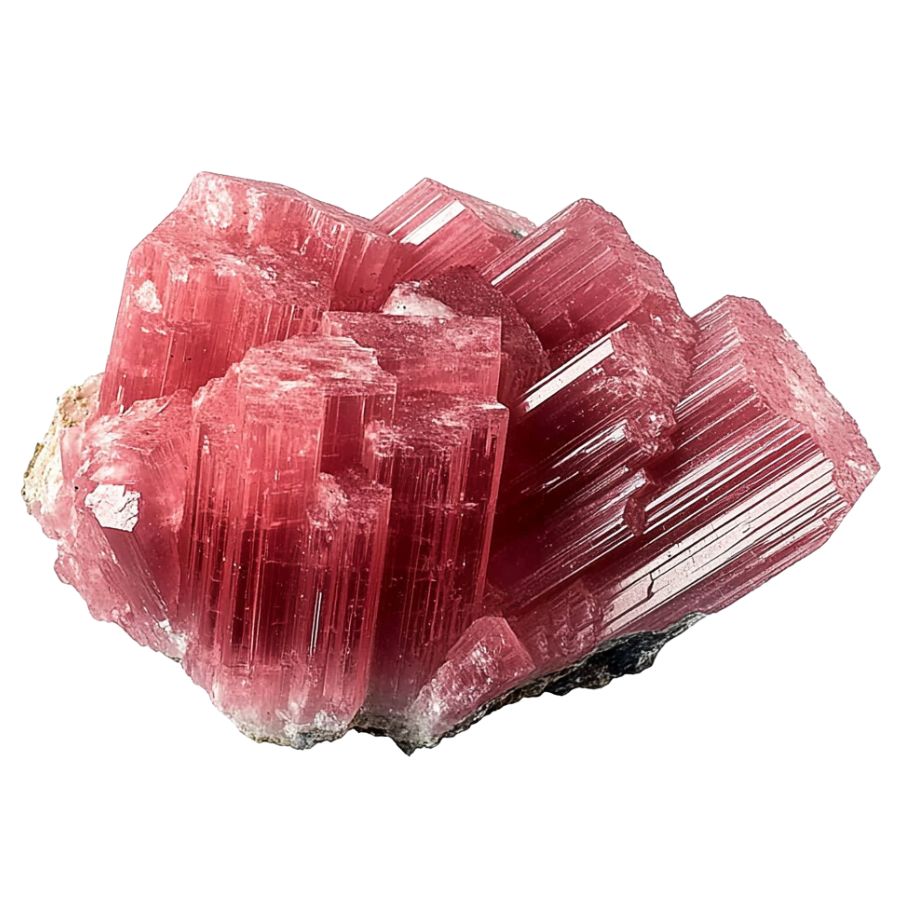
Appreciated for its deep pinks and reds, often complemented by black manganese oxide veins, rhodonite presents a dramatic appearance. It is typically found in metamorphic rocks and is used both as an ornamental stone and in jewelry.
In geology, rhodonite is significant for its role in metamorphic processes and its association with other manganese-rich minerals. It can be found in metamorphosed sedimentary rocks and is sometimes used as an indicator of the presence of manganese deposits.
Vivianite
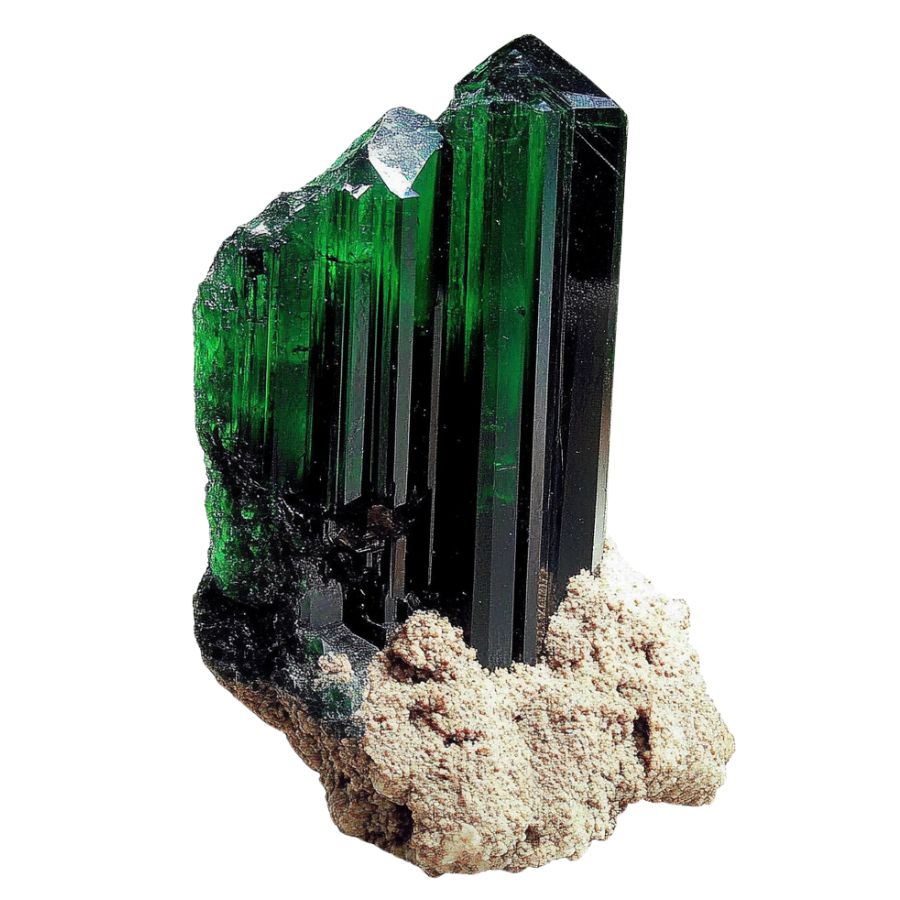
Vivianite, an iron phosphate mineral, emerges in low-oxygen environments like peat bogs or iron-rich deposits. Its striking blue to green color, which can change to a lighter shade over time due to oxidation, makes it a distinctive mineral.
Found in various geological settings, vivianite provides clues about the local conditions and the presence of phosphate deposits.
Crystals you can find in Pennsylvania
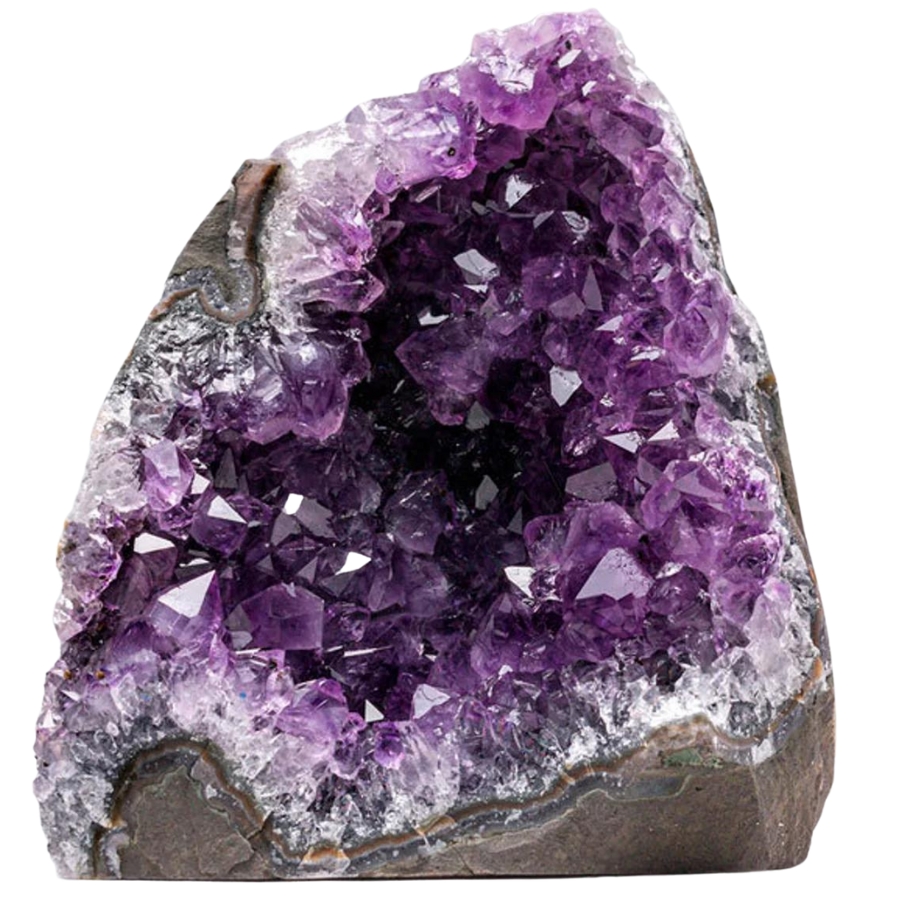
Pennsylvania is a treasure trove of crystal formations, and with so many various types of crystals to explore, it’s no wonder people come from different locations to find crystals here.
The state’s unique geological makeup and history make it a perfect spot to find a broad range of crystals. These unusual and stunning specimens make our state an attractive rockhounding destination.
Rare crystals found in Pennsylvania
- Amethyst
- Calcite
- Garnet
- Pyrite
- Jasper
More common crystals found here
- Apophyllite
- Azurite
- Epidote
- Galena
- Hematite
- Malachite
- Prehnite
- Selenite
- Stilbite
- Quartz (Blue, Green, Smoky)
- Tourmaline
- Petrified wood and other fossils
What rough crystals look like
When you’re out looking for crystals on your own it’s important to know what you’re looking for. This is what you need to look out for:
Look for exteriors like this
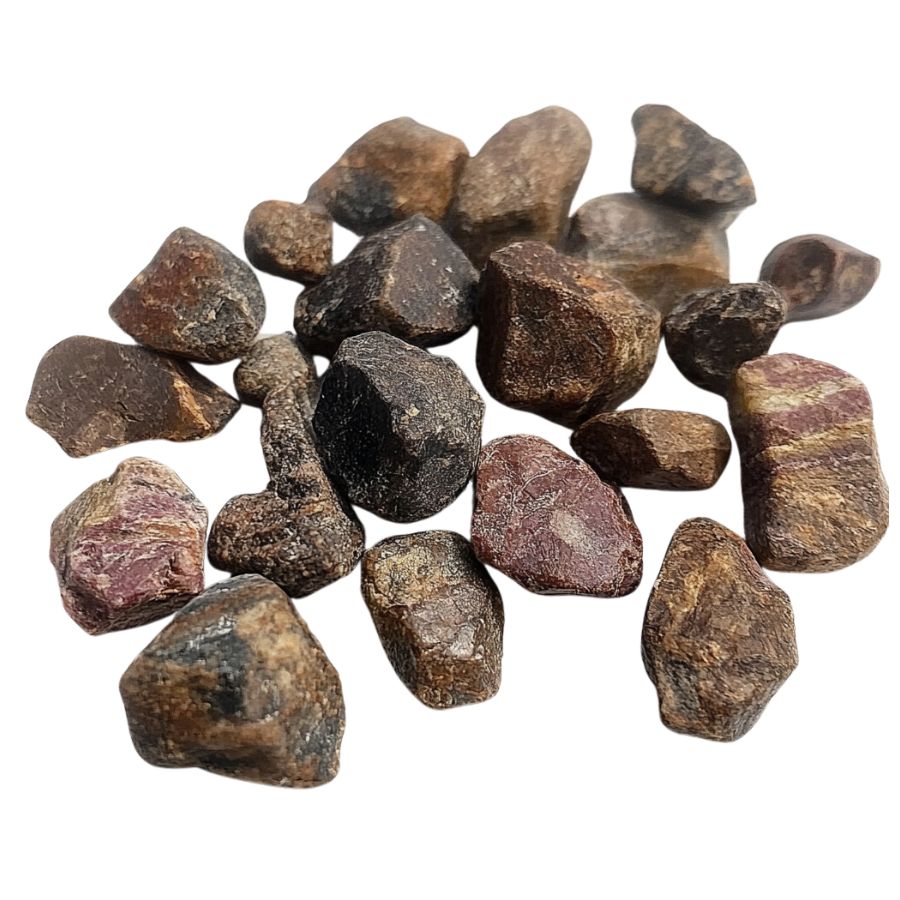
When you’re out searching for crystals in the wild, it’s essential to keep in mind that what you find won’t look like the polished stones you see in stores. One important tip is to consider what certain crystals look like in their raw, natural form.
Without the shine and smooth finish, crystals might appear rough, with jagged edges or earthy tones masking their true beauty. Understanding this can help you spot potential finds that might otherwise be overlooked.
Examine the crystal structure and shape
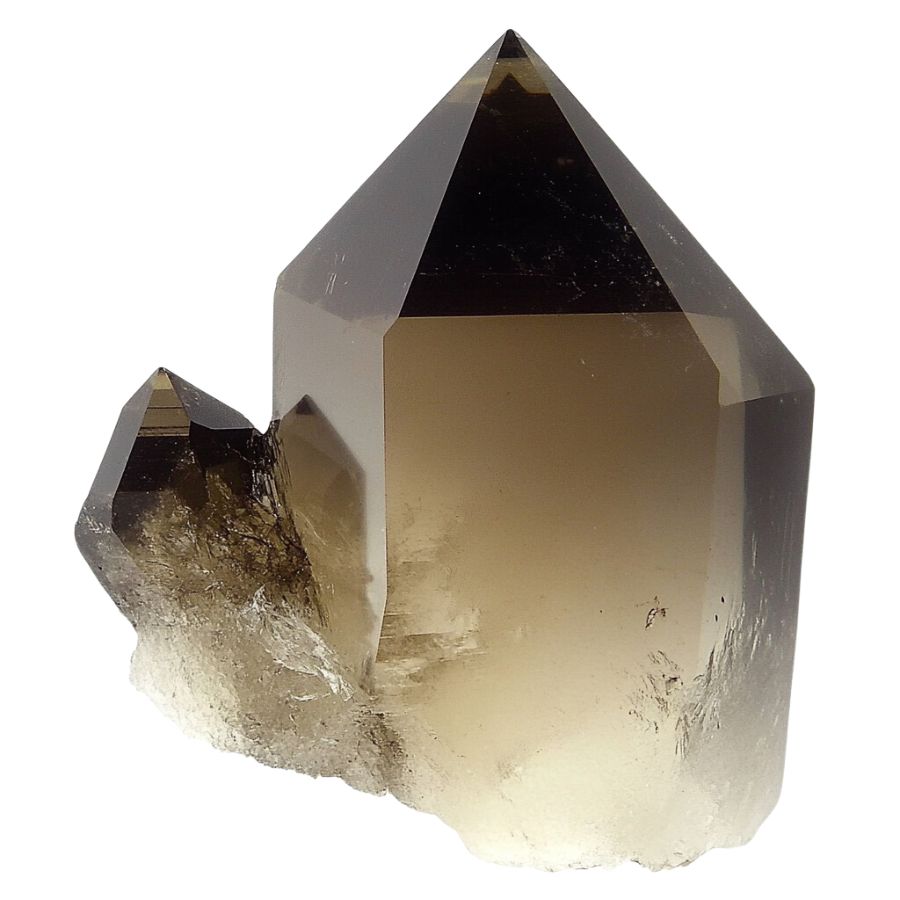
Crystals often form in specific geometric patterns that can be key to identifying them. For example, quartz is known for its hexagonal prisms, while halite typically forms cubic shapes.
By recognizing these distinct patterns, you can differentiate between various types of crystals and better understand what you’ve found.
Observe color
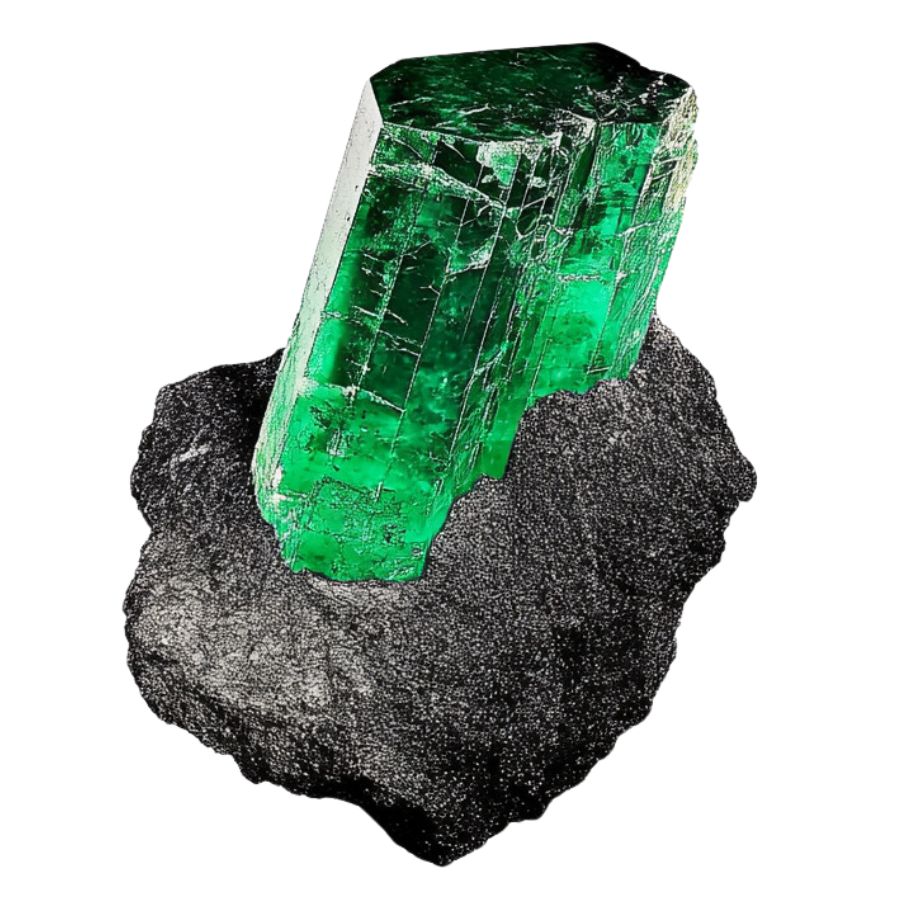
Some crystals are known for their distinct hues, like the deep purple of amethyst or the vibrant green of emerald. However, not all crystals will have strong colors; some may be clear or only slightly tinted.
Check the luster
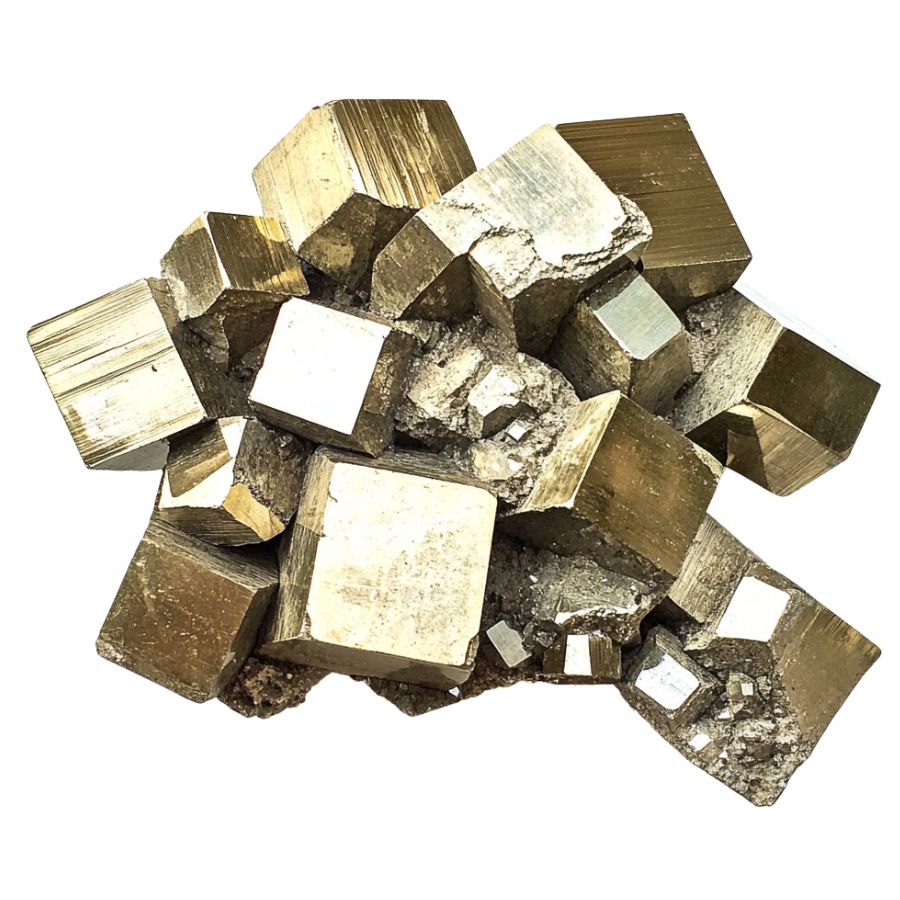
Luster refers to how a crystal’s surface interacts with light. Some crystals might have a shiny, glassy luster, while others may appear metallic or dull. This characteristic can help you determine the type of crystal you’ve found.
However, it’s important to remember that luster isn’t always obvious right away. In some cases, a crystal’s true luster will only become apparent after it’s been cleaned or polished, so keep this in mind as you examine your finds.
Evaluate the transparency
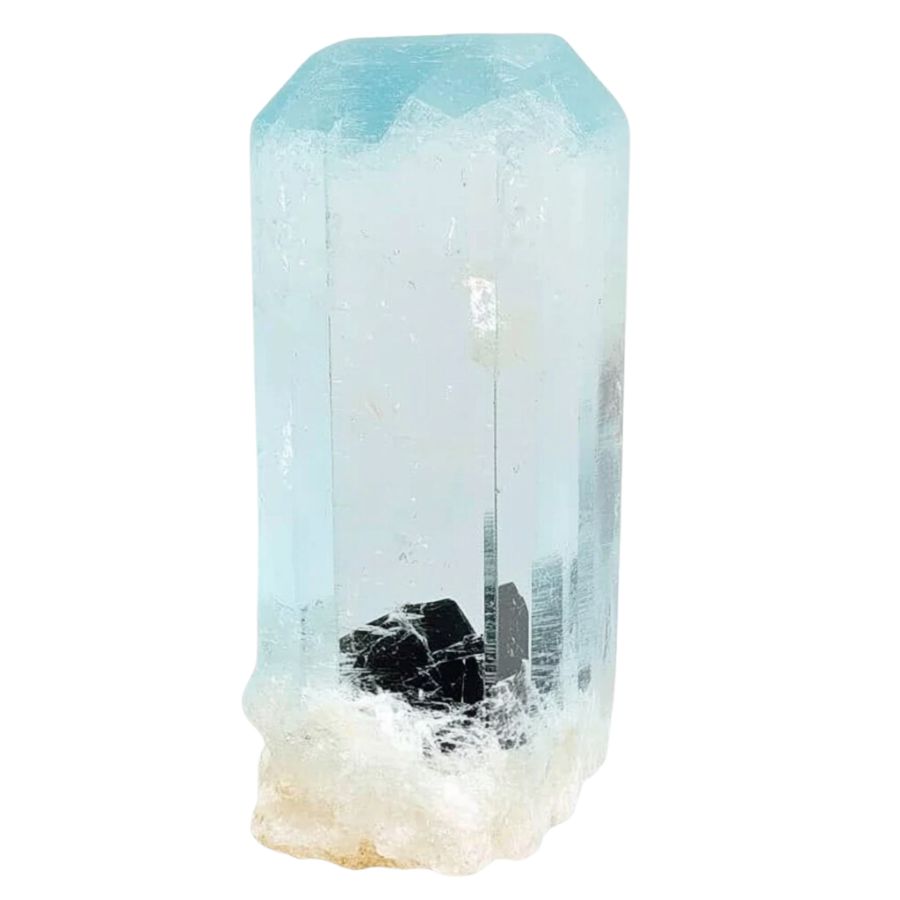
Pay close attention to how much light passes through the crystal. Some crystals are completely clear, allowing light to pass through easily, while others may be opaque and block light entirely.
You might also encounter crystals with translucent edges but opaque centers. These variations in transparency can offer valuable clues about the type of crystal you’ve found, making it easier to identify and appreciate your discovery.
A Quick Request About Collecting
Always Confirm Access and Collection Rules!
Before heading out to any of the locations on our list you need to confirm access requirements and collection rules for both public and private locations directly with the location. We haven’t personally verified every location and the access requirements and collection rules often change without notice.
Many of the locations we mention will not allow collecting but are still great places for those who love to find beautiful rocks and minerals in the wild without keeping them. We also can’t guarantee you will find anything in these locations since they are constantly changing.
Always get updated information directly from the source ahead of time to ensure responsible rockhounding. If you want even more current options it’s always a good idea to contact local rock and mineral clubs and groups
Tips on where to look
Having a better idea of where to look can greatly narrow down your search and increase your chances of finding crystals. By focusing on environments where crystals are likely to be exposed, you can spend less time searching and more time discovering.
Outcrops and Exposed Rock
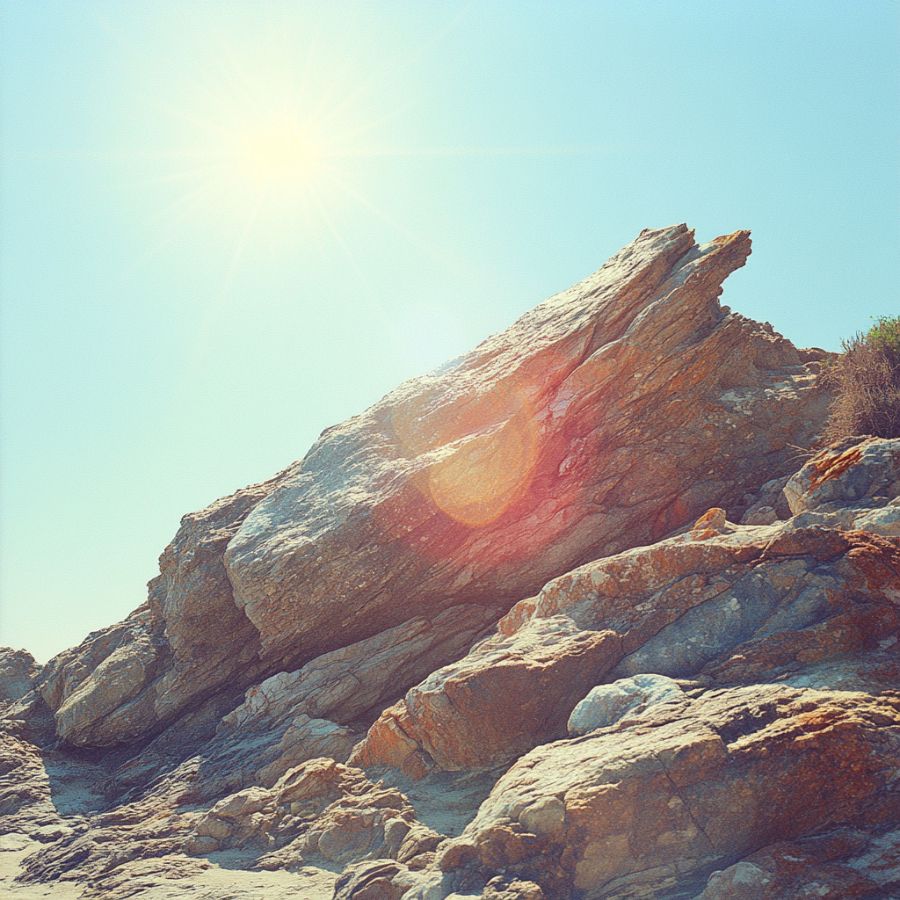
Rocky outcrops are prime locations for finding crystals and minerals. Search along the edges of outcrops, particularly where erosion has worn away the surrounding soil, revealing the rock underneath.
Pay close attention to any visible cracks, crevices, or small cavities within the outcrop, as these are often where crystals develop and can be extracted with minimal effort.
Stream Beds and Gravel Deposits
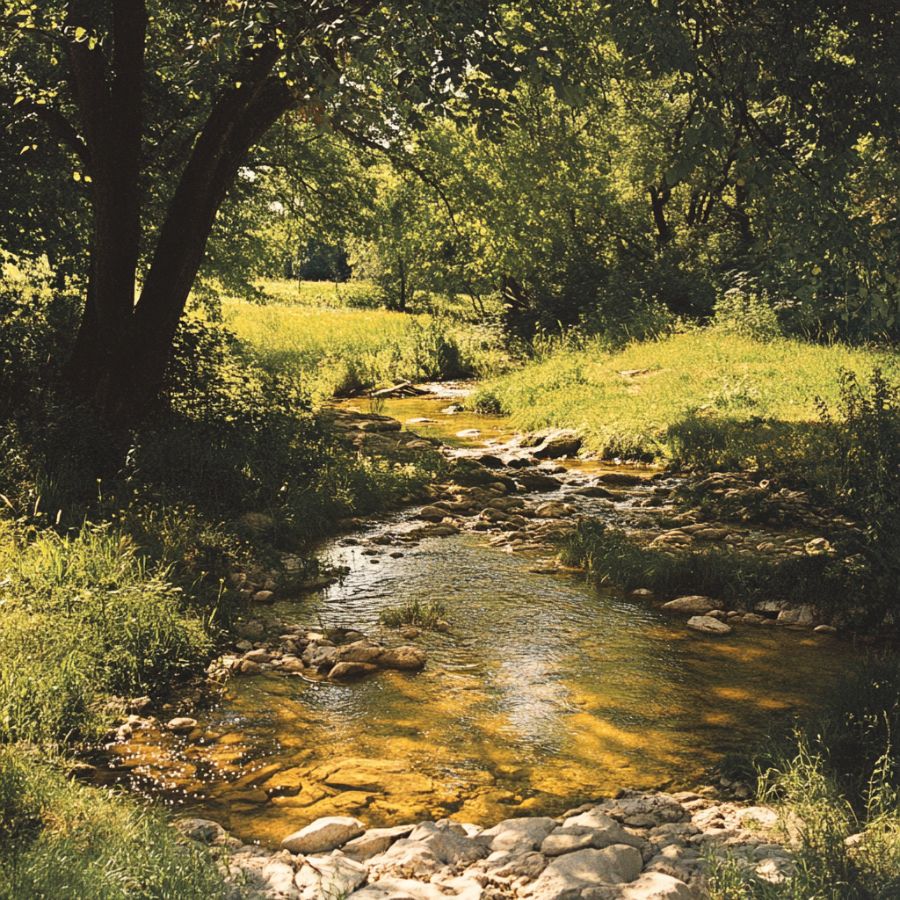
Stream beds are dynamic environments where water flow constantly shapes the landscape. Over time, water can erode rocks upstream, breaking them down and carrying mineral fragments, including crystals, downstream.
When searching in these areas, look for spots where the current has slowed, such as bends in the stream or areas behind large rocks, as these are prime locations for deposits.
Quarries and Mines
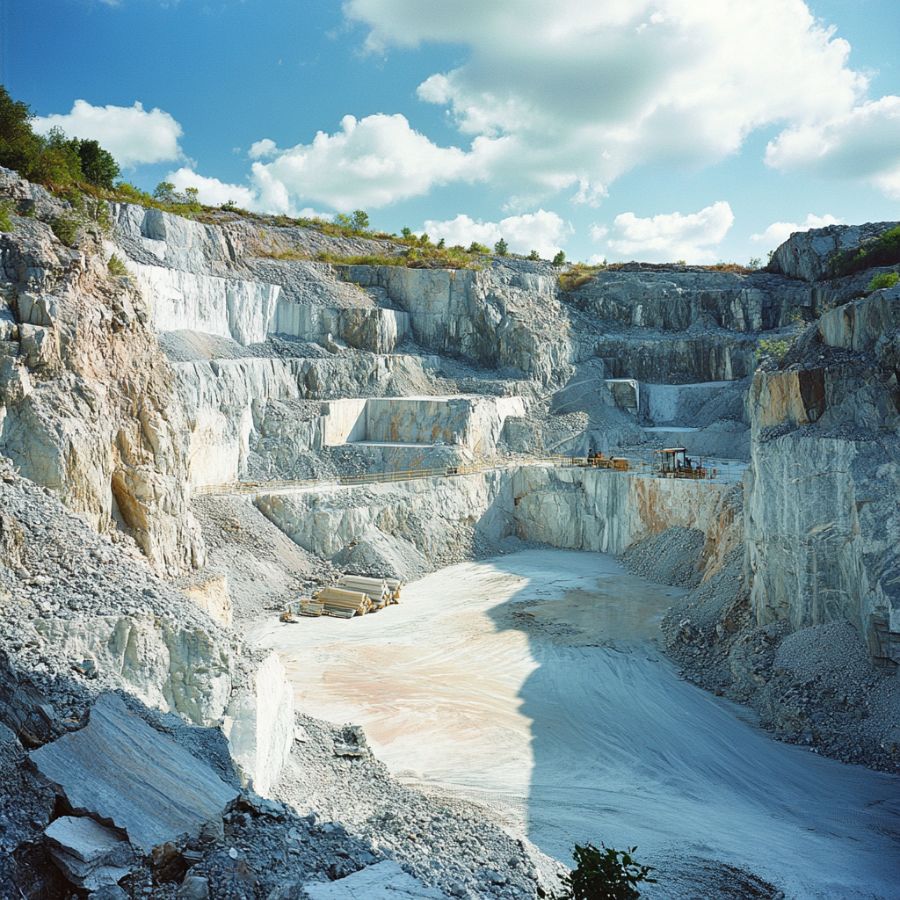
Quarries and mines are excellent places to search for crystals because they expose deep layers of rock that would otherwise be hidden beneath the surface. These sites often contain a variety of minerals and crystals that have been brought to the surface during excavation.
Pay attention to tailings piles, where waste rock is discarded, as they often contain overlooked or broken crystals. Always prioritize safety when exploring these areas and ensure that you have permission to search.
Road Cuts and Construction Sites
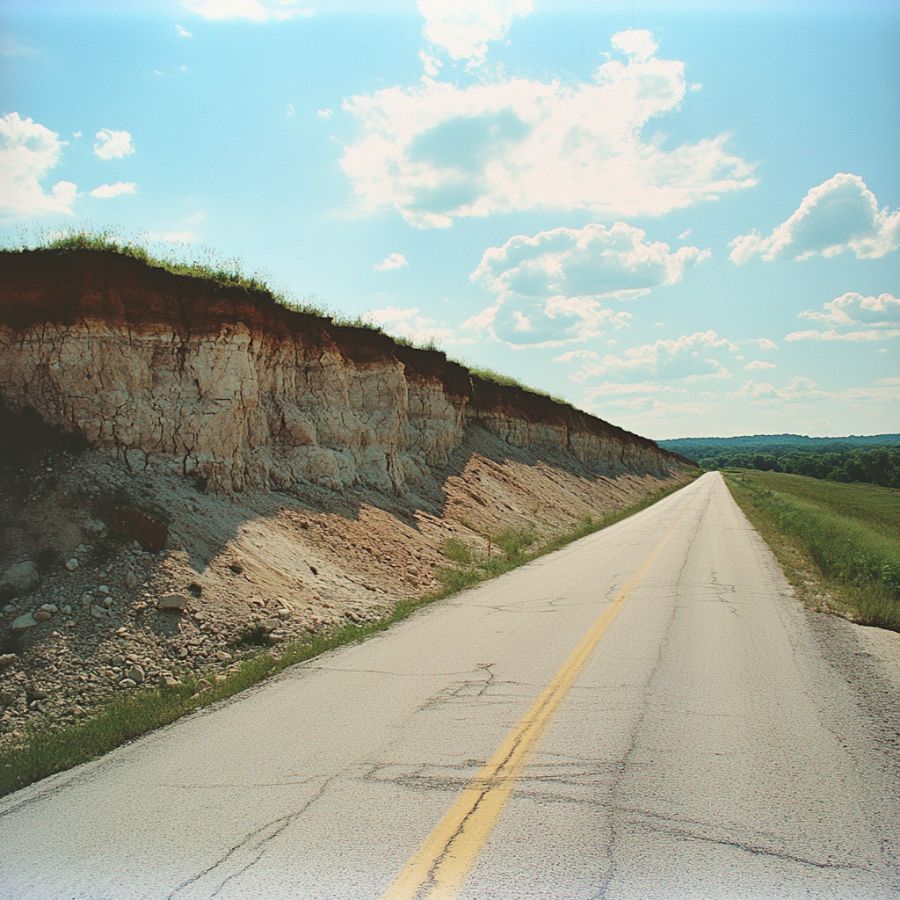
As roads are cut through hillsides or construction projects dig deep foundations, layers of rock and soil that have been undisturbed for millions of years are suddenly exposed.
Look for freshly exposed rock faces, especially where blasting has occurred, as this can create fissures or expose pockets filled with crystals. Be cautious around active construction sites, and always seek permission before exploring.
Mountainous Areas

In mountainous regions, erosion caused by wind, rain, and ice can wear away the softer rock, exposing harder crystals that have formed within. Focus on weathered and broken rock formations.
Look for scree slopes, where loose rock has accumulated at the base of cliffs. Additionally, areas near fault lines or volcanic vents are particularly promising, as they often have a higher concentration of minerals.
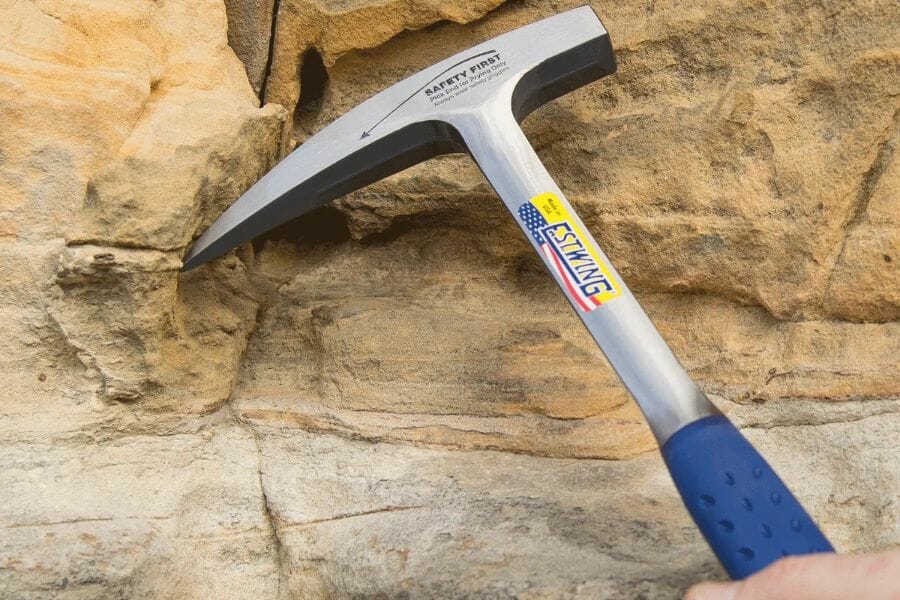
The tools every crystal hunter will need
When you're out looking for crystals having the right tools for the job is very important. You don't need a lot for most trips but there are a handful that are critical and will make your life a lot easier.
We get asked a lot about the equipment we use. Over the years we've found a handful of tools that we recommend to both new and experienced crystal miners which we outline in great detail in our complete rockhounding equipment guide. These are quality options that also happen to be relatively inexpensive.
Below are the basic tools that make your life so much easier and save you a ton of time. Check out the full guide to see everything we recommend bringing. One quick note, as an Amazon Associate I earn from qualifying purchases but we try very hard to only recommend gear we would use ourselves and often recommend brands you can't find on Amazon.
At a minimum you should have:
1 - Sturdy rock hammer: The Estwing Rock Pick is our standard
2 - Rugged chisels: Try Kendo' 3-piece Chisel Set
3 - Compact shovel: The Koleiya 28-inch shovel works well
4 - Rock screen pan: The Wazakura Soil Sieve Set fits the bill
5 - Eye protection: DeWalt Safety Glasses are cheap and comfortable
6 - Head protection: Malta's Safety Helmet has been our go-to
7 - Jewelers lens with at least 20x magnification: Jarlink's Jewelers Loop is perfect
The crystal-finding books that we use most
There are also a few books that have been extremely helpful in the search for gems. These books have great recommendations and tips:
National Audubon Society Field Guide to Rocks and Minerals: North America
Southeast Treasure Hunter's Gem & Mineral Guide
Earth Treasures: The Southeastern Quadrant
We provide links to find these tools on Amazon but some can also be found at your local hardware stores. For more recommendations check out the link to our full tool guide above.
Crystal Mining Laws And Regulations
Mining and digging for crystals in Pennsylvania is legal for as long as you strictly abide by our state’s collecting laws, especially the one being imposed by the Pennsylvania Department of Environmental Protection (PADEP) for public and government lands.
First and foremost of this is to obtain necessary permits and permissions from landowners or other relevant government offices. Also, check any rules and regulations to protect the biodiversity in the area you will explore.
By being a responsible crystal hunter, you are helping sustain crystal mining for generations.
- The extensive local experience and understanding of our team
- Input from multiple local crystal hunters and crystal collecting groups
- The accessibility of the crystal mining locations
- Safety and potential hazards when collecting
- Private and public locations
- A desire to include locations for both experienced crystal hunters and those who are just starting out
Using these weights we think we’ve put together the best list out there for those who love finding new crystals for our collections!
The Best Locations For Crystal Mining We’ve Found

There are a lot of great places in our state to find crystals, but we’ve only picked our top six to get into detail. You’ll have a great time visiting these areas, as they have a handful of crystals you can find!
Always Confirm Access and Collection Rules!
Before heading out to any of the locations on our list you need to confirm access requirements and collection rules for both public and private locations directly with the location. We haven’t personally verified every location and the access requirements and collection rules often change without notice.
Many of the locations we mention will not allow collecting but are still great places for those who love to find beautiful rocks and minerals in the wild without keeping them. We also can’t guarantee you will find anything in these locations since they are constantly changing.
Always get updated information directly from the source ahead of time to ensure responsible rockhounding. If you want even more current options it’s always a good idea to contact local rock and mineral clubs and groups
Aquashicola River
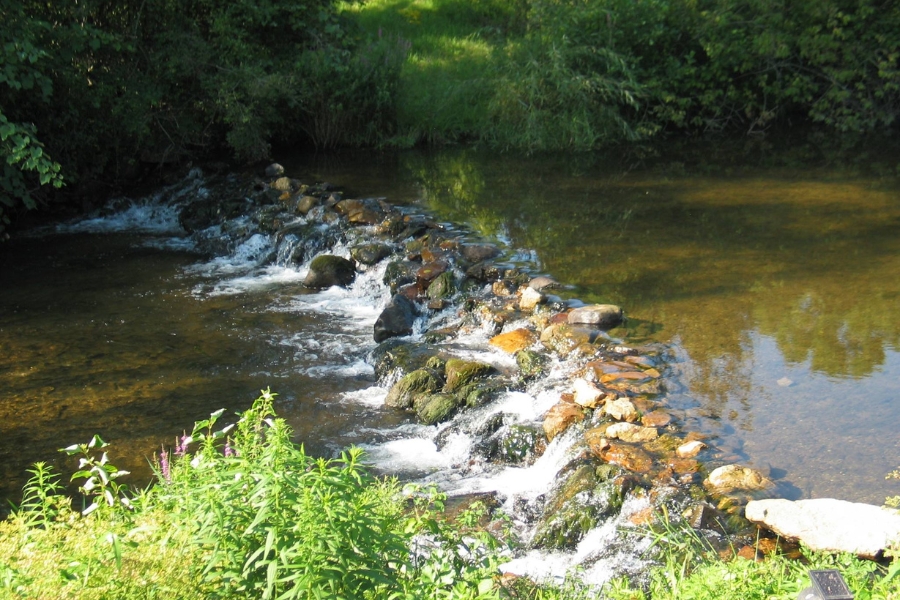
Monroe County, Poconos, Eastern PA
The Aquashicola River is a tributary of the Lehigh River. It has a fascinating mix of natural beauty and geological significance. This river runs across the state and has been an important part of the region’s history.
In the past, it was an important waterway for local industries and communities, which helped the economy grow and develop. Today, it is a peaceful reminder of the state’s rich natural heritage, attracting tourists.
Numerous minerals and crystals are present in the river’s basin, resulting from hundreds of years of geological activity.
Where we found crystals at Aquashicola River
Outside the river, along the different rock formations, we had a great time discovering quartz, amethyst, calcite, and pyrite specimens.
Brookdale Mine
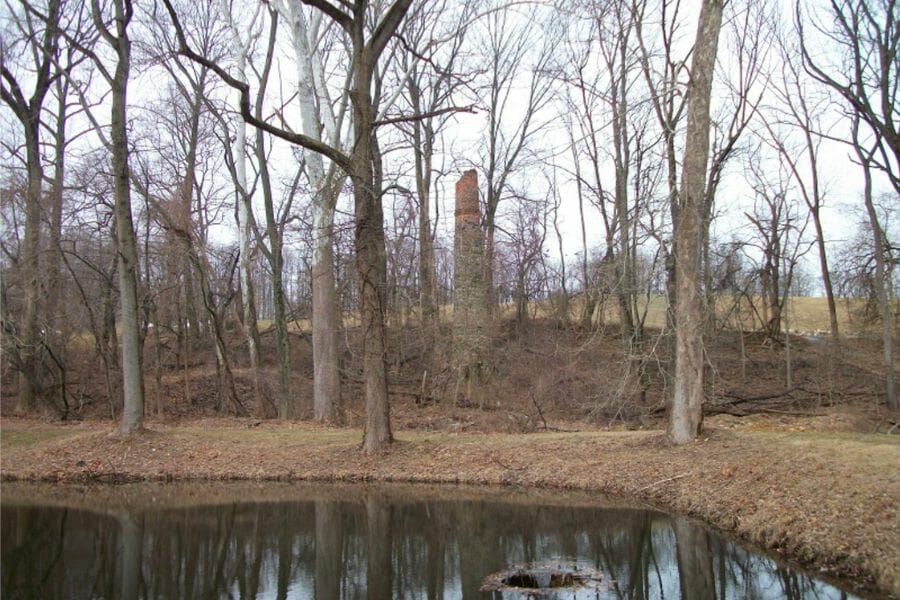
Liberty Township, PA 18822
A fascinating location full of geological treasures and history, Brookdale Mine’s mineral-rich terrain has been the center of mining activity for many years. Its history is entwined with the larger story of our state’s industrial and geological development.
Today, it’s renowned for its mineral-rich veins that run deep underground, making it a prime spot for crystal hunting. It’s also one of the best places to mine gems in Pennsylvania.
Initially mined for its coal and metal deposits, it eventually attracted the attention of industrial miners and mineral enthusiasts.
Many crystal collectors like the Brookdale Mine because it has a wide range of high-quality specimens. The environment in the mine has kept these crystals in amazing shape so that you can find well-formed specimens worth something.
Where we found crystals at Brookdale Mine
We had a great time exploring the areas surrounding the mines, where we found different breath-taking crystals.

The tools every crystal hunter will need
When you're out looking for crystals having the right tools for the job is very important. You don't need a lot for most trips but there are a handful that are critical and will make your life a lot easier.
We get asked a lot about the equipment we use. Over the years we've found a handful of tools that we recommend to both new and experienced crystal miners which we outline in great detail in our complete rockhounding supplies guide. These are quality options that also happen to be relatively inexpensive.
Below are the basic tools that make your life so much easier and save you a ton of time. Check out the full guide to see everything we recommend bringing. One quick note, as an Amazon Associate I earn from qualifying purchases but we try very hard to only recommend gear we would use ourselves and often recommend brands you can't find on Amazon.
At a minimum you should have:
1 - Sturdy rock hammer: The Estwing Rock Pick is our standard
2 - Rugged chisels: Try Kendo' 3-piece Chisel Set
3 - Compact shovel: The Koleiya 28-inch shovel works well
4 - Rock screen pan: The Wazakura Soil Sieve Set fits the bill
5 - Eye protection: DeWalt Safety Glasses are cheap and comfortable
6 - Head protection: Malta's Safety Helmet has been our go-to
7 - Jewelers lens with at least 20x magnification: Jarlink's Jewelers Loop is perfect
The crystal-finding books that we use most
There are also a few books that have been extremely helpful in the search for gems. These books have great recommendations and tips:
National Audubon Society Field Guide to Rocks and Minerals: North America
Northeast Treasure Hunter's Gem & Mineral Guide
Earth Treasures: The Northeastern Quadrant
We provide links to find these tools on Amazon but some can also be found at your local hardware stores. For more recommendations check out the link to our full tool guide above.
Caledonia State Park
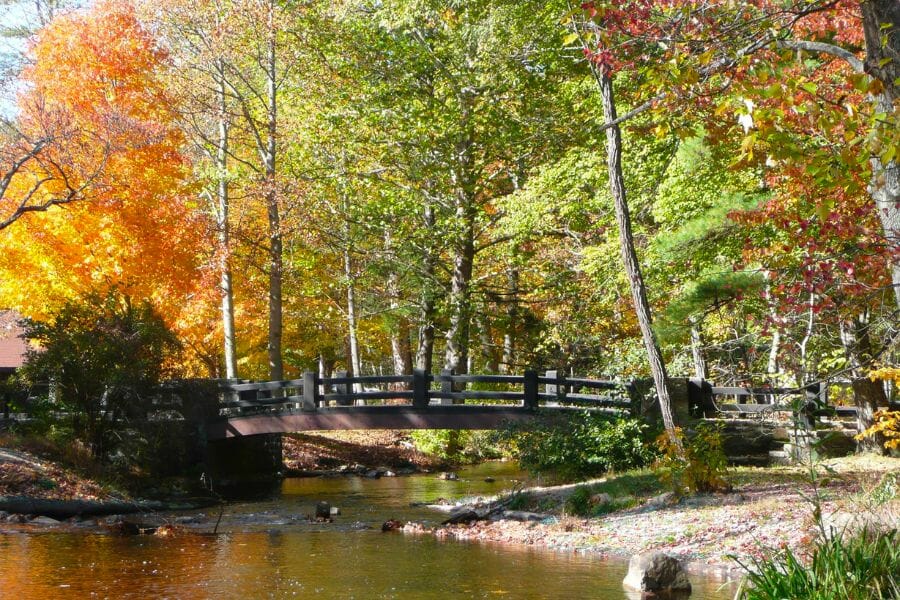
101 Pine Grove Rd, Fayetteville, PA 17222
Caledonia State Park is a great place for both nature lovers and history buffs. The park’s namesake, the Caledonia Furnace, was an important site during the Civil War and a big part of the iron industry, which helped the area’s economic and industrial growth.
Today, the park stands as a testament to this rich history, offering a variety of activities and attractions.
The park is a hidden gem for crystal lovers. Its geology is made up of a wide range of mineral deposits resulting from the area’s active geological past.
For fun, you can go hiking, camping, or fishing, and the beautiful Appalachian Mountains make the setting even more appealing. It also features a variety of rock formations, which can help you identify the crystals you’ll find.
Where we found crystals at Caledonia State Park
The park’s streams and rocky outcrops serve as ideal spots for discovering crystals, as natural erosion and weathering bring them to the surface.
Once you find a specimen, you might wonder how much do crystals cost? We answered that in our article, too.
Teeter Limestone Quarry
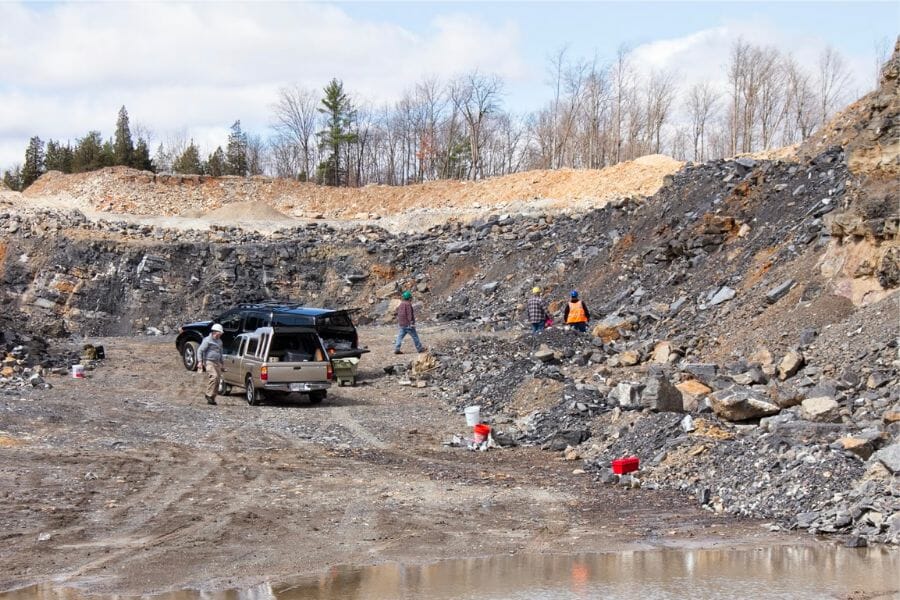
1575 Baltimore Pike, Gettysburg, PA 17325
The Teeter Limestone Quarry is both historically and geologically important. It was first built in the early 1900s because it had a lot of limestone, which was in high demand in the local construction and industrial sectors.
Over the years, the quarry has been an important part of the region’s growth, helping with many building projects and showing us the state’s rich geological history.
Layers of limestone exposed by the mine have been through many geological processes over millions of years. These processes have created rare and beautiful crystals.
You can go to the quarry and dig through the layers of limestone to find hidden treasures and learn more about the complex processes that shape our natural world.
Where we found crystals in Teeter Limestone Quarry
The best spot to find crystals in this area is on the west bank of Rock Creek, just before the Power Hill junction.
Once you find a specimen, you might wonder how much are crystals worth, so you can also refer to our article on that.
Chester Creek
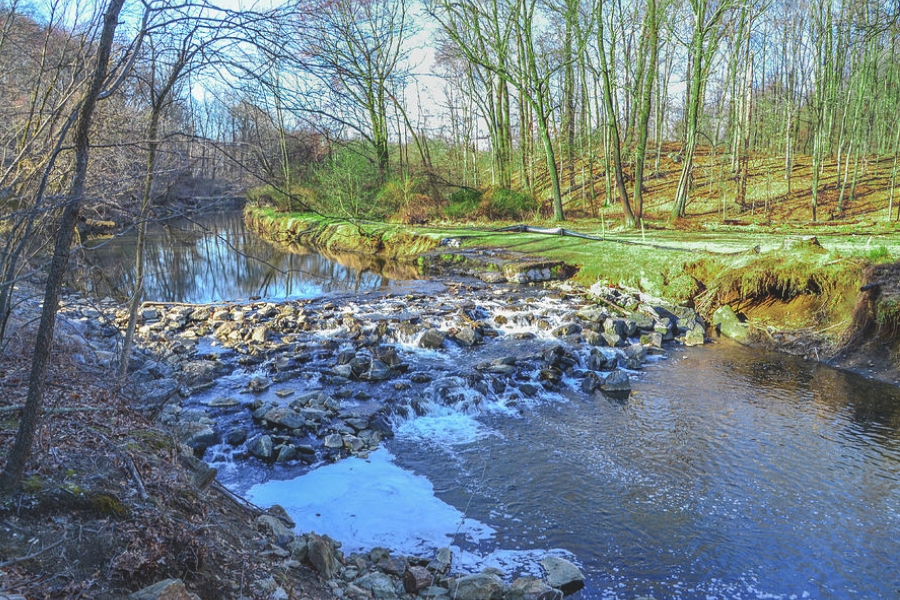
249 Knowlton Rd, Media, PA 19063
From its early use by Native American tribes to its role in the growth of local industries during the colonial and post-colonial periods, Chester Creek has been an important part of the area’s history.
The creek’s waters powered mills and factories, which helped the area’s economy grow significantly.
Chester Creek has a peaceful and beautiful landscape that is great for hiking, fishing, and taking pictures of nature. It’s a unique place to visit because it has historical and natural beauty.
You can enjoy the peace of the creek’s environment while learning about its geological treasures.
Where we found crystals at Chester Creek
Quartz crystals, such as amethyst and milky quartz, can be found in large amounts in the alluvial sediments along the creek’s banks and the areas next to them.
Natural processes like erosion and sedimentation have brought these crystals to the surface.
Schuylkill River

The Schuylkill River flows through our beautiful state and has a long history and fascinating geology. It was named “Schuylkill” by early Native American groups, which means “hidden river.”
The river has been very important to the state’s growth throughout history, especially during the Industrial Revolution, when it was the main way to move coal and other goods.
Besides crystal hunting, the Schuylkill River has many other fun things to do. You can hike, fish, and boat along its banks, which make for beautiful scenery on outdoor experiences.
Where we found crystals in the Schuylkill River
Along the Schuylkill, some places are famous for their quartz crystals, like clear and smoky quartz. It was so much fun to look for these crystals in the mines along the river in Bridgeport.
You can also often find these crystals in the alluvial layers along the river, where the water has naturally polished and shaped them.
My Other Favorite Places For Crystal Hunting
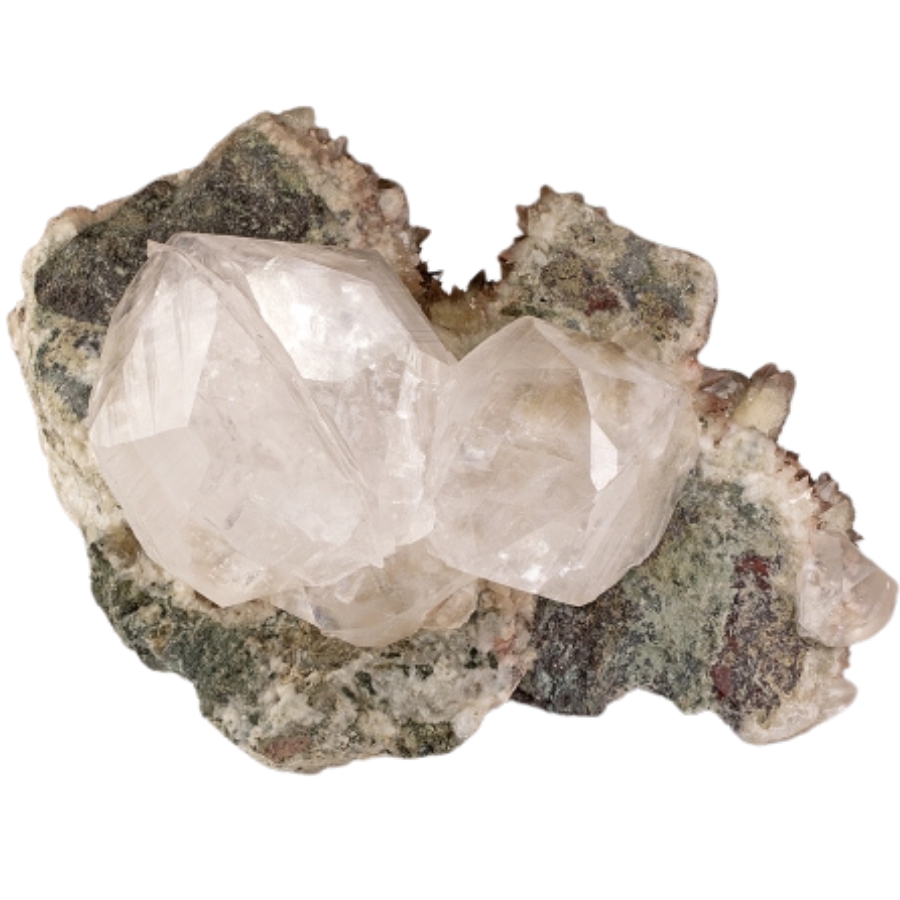
Like I said previously, our top six recommendations above are not the only suggestions of places to find crystals here. Being an incredibly endowed state, we have plenty of other spots with amazing crystals and sites where you can find Pennsylvania geodes, too. Here are some of them:
Where you can find crystals for free
While many of the best options to find crystals here will require you to pay before digging, there are other places where you won’t have to spare a dime to search for these natural wonders.
| County | Location |
| Adams | West side of the Piney Mountain Area |
| Adams | Head of the Buchanan Valley |
| Allegheny | Glassmere area quarry |
| Armstrong | In Gravel Bar Hollow and at abandoned prospects |
| Bedford | In fields from Morrison Cove Valley to New Enterprise |
| Bucks | Oley Furnace area, 1.75 miles northeast on Green Hill |
| Centre | Lemont area at the Nidgh Quarry |
| Chester | Southeast at the Keystone Traprock Quarry |
| Cumberland | 1 mile east of the Pennsylvania Turnpike Carlisle Interchange, in the fields on south side of SR-11 |
| Delaware | 1 mile west on the George Sharpless Farm |
| Franklin | On north face of Huckleberry Hill in Mount Union area |
| Huntington | Three Springs area quarries |
| Montgomery | 0.5 mile northeast of Blackhorse area |
| Westmoreland | 1 mile northwest in fields of Mount Pleasant area |
Other great places to dig for crystals
If you don’t mind paying to dig for amazing crystals here, we’ve also compiled some places you can visit. Note that the fees may change depending on the season, so don’t forget to confirm with them before visiting the place.
| County | Location |
| Adams | Banks of Tom’s Creek at the Reed Hill Mine |
| Adams | At the Virgin Mine |
| Armstrong | Apollo area mines |
| Armstrong | McVille area mines |
| Berks | Near the old Boyertown Iron Mines |
| Blair | Culp area mines |
| Blair | 4 miles northeast to the Little Juanita River Mines |
| Bradford | At the Carpenter Mine |
| Chester | North at the French Creek Mine dumps in St. Peter’s area |
| Greene | Area quarry of Poland Mines |
| Lancaster | 0.75 mile north of Gap Nickel Mines, east of smelter ruins |
The Best Crystal Shops In The Area
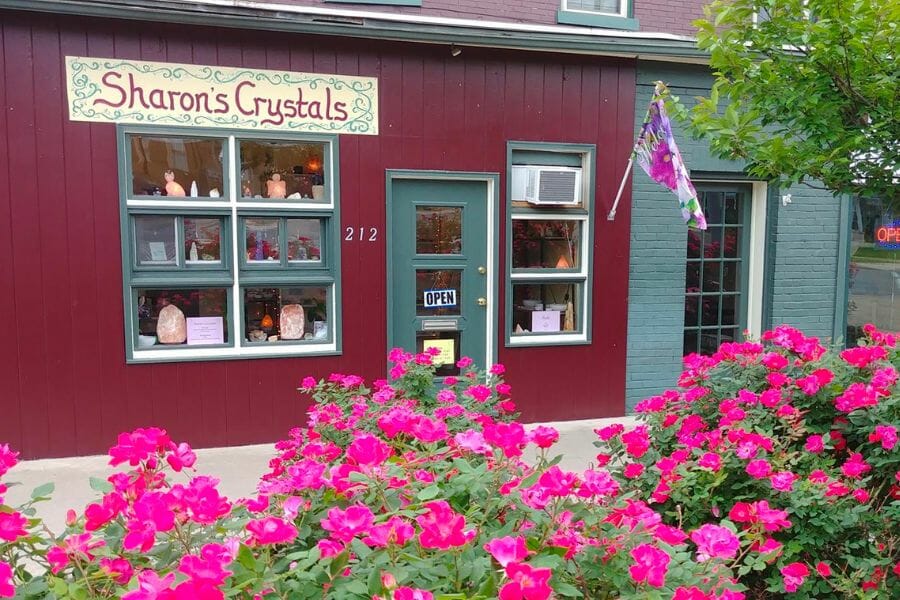
If you’re one to invest (literally) to your collection, chances are, you prefer to buy specific crystal specimens that will complete or add more variety to your collection. That’s why we also included here a list of some of the leading local crystal shops in our state:
- Rocky’s Crystals and Mines – 310 E Girard Ave, Philadelphia, PA 19125
- Bey’s Rock Shop – 615 PA-100, Bechtelsville, PA 19505
- Sharon’s Crystals – 212 East St, Bloomsburg, PA 17815
- Pocono Rock Shop – 254 Stadden Rd, Tannersville, PA 18372
- Middle Path Minerals – 2415 Frankford Ave Unit A, Philadelphia, PA 19125
- Rina’s Rocks – 120 S York Rd, Hatboro, PA 19040
- Heart of the Earth Crystals & Jewelry – 1504 Washington Ave, Hyde, PA 16843
- Creekside Rocks & Gems – 110 N Allegheny St, Bellefonte, PA 16823
- TJ’s Rocks and Gemcrafts – 4433 Lincoln Hwy, Downingtown, PA 19335
- Appalachian Rock Shop – 228 N Washington St, Butler, PA 16001
Additional places to find crystals in nearby states
If you’ve already tried all of our recommendations above or are planning a trip out of the state, you should check out our guides for neighboring states:
- Crystals in New York
- Crystals in New Jersey
- Crystals in Delaware
- Crystals in Maryland
- Crystals in West Virginia
- Crystals in Ohio
If you have any recommendations we haven’t covered, please leave them in the comments below!

